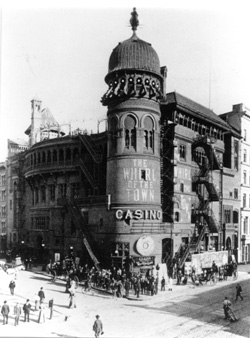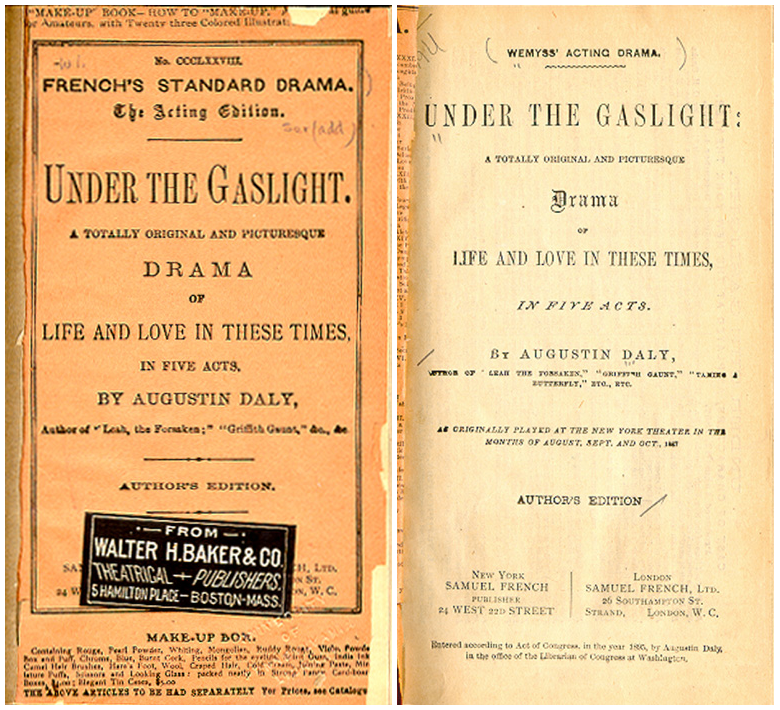As much as the elegant shops of Chicago attracted Carrie, it was the theater that captivated her and ultimately provided economic independence. Dreiser was well acquainted with theatrical life in the 1890s, whether it be in Chicago or New York. He incorporated that knowledge into the text of Sister Carrie. The names of real actors, actresses, dramatists, and plays frequently appear in the characters' dialogues as well as in the third-person narration that describes where someone has been or is going.
They dined and went to the theatre. That spectacle pleased Carrie immensely. The colour and grace of it caught her eye. She had vain imaginings about place and power, about far-off lands and magnificent people. When it was over, the clatter of coaches and the throng of fine ladies made her stare.--from Chapter VIII of Sister Carrie
Fig. 1: Located at Broadway and Thirty-Ninth Street in Manhattan, the Casino was one of the largest theaters in New York: it specialized in musicals and was the place where Carrie made her debut as a chorus girl.
Fig. 2: When writing Sister Carrie, Dreiser consulted this edition of the play, from which he incorporated actual dialogue and stage directions into the novel.
"And you want me to get some woman to take a part?" questioned Drouet . . . . "What are you going to play?""Under the Gaslight,'" said Mr. Quincel, mentioning Augustin Daly's famous production, which had worn from a great public success down to an amateur theatrical favourite, with many of the troublesome accessories cut out and the dramatis personae reduced to the smallest possible number.
--From Chapter XVI of Sister Carrie

